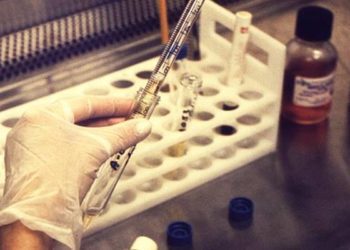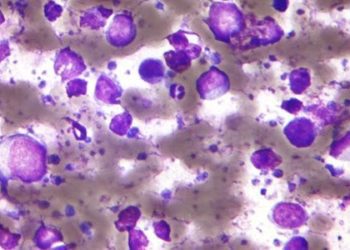Confounding influences phototherapy’s association with increased childhood cancer risk
1. Among the cancers considered, phototherapy was most strongly associated with nonlymphocytic leukemia; however, the association lost significance after adjusting for possible confounding variables.
2. For infants with trisomy 21, known to have an increased baseline cancer risk, there was a greater probability of developing childhood cancer following exposure to phototherapy.
Evidence Rating Level: 2 (Good)
Study Rundown: Infants are particularly susceptible to jaundice (hyperbilirubinemia) due to increased bilirubin production and reduced hepatic elimination at birth. Phototherapy aids in the breakdown of bilirubin and is commonly used to treat severe cases of infant hyperbilirubinemia. While beneficial to avoid hyperbilirubinemia-induced brain damage, previous studies have suggested, albeit inconsistently, a link between phototherapy and childhood cancer. To further investigate this potential association, study authors examined the medical records of a subset of children included in the Late adverse Impact of Getting Hyperbilirubinemia or photo Therapy (LIGHT) study. Initial calculations of incidence ratios were significant for associations between phototherapy and any cancer, any leukemia, nonlymphocytic leukemia (particularly myelocytic leukemia), and liver cancer. However, upon accounting for possible confounding variables, the significance disappeared. While the number needed to harm (NNH) for all types of leukemia over a 10-year period was on the order of thousands for children without Down syndrome, for those with Trisomy 21, the NNH was only 65. A limitation of this study was its inability to precisely capture dose-dependent risk. Although statistical significance may be lacking, considering the results of this and other studies, clinicians should carefully weigh the potential benefits of phototherapy with the risk of developing childhood cancers, especially in populations that are already at increased risk, namely trisomy 21.
Click to read the study, published today in Pediatrics
Relevant Reading: Phototherapy for neonatal jaundice
Study Author, Thomas B. Newman, MD, MPH talks to 2 Minute Medicine: Department of Epidemiology & Biostatistics, University of California, San Francisco, California.
“This article and the companion article by Wickremasinghe et al. on the same topic in the same issue of Pediatrics are worth a look if you care for jaundiced newborns and will be making phototherapy decisions with parents (who may hear about the study). Previous studies have been mixed about whether there is an association between neonatal phototherapy and subsequent leukemia. These studies show there is definitely an association, but the Kaiser study, with better data on potential confounding variables suggests that it is at least partly due to confounding.”
In-Depth [retrospective cohort]: Participants included a Kaiser Permanente Northern California (KPNC) cohort of 499 621 infants, a subset of those participating in the LIGHT study. These children met the exclusion criteria, which included a diagnosis of cancer within the first 60 days of life (21 children, <0.01%). Receipt of inpatient phototherapy was determined through procedural codes and the Epic electronic medical record, while home phototherapy was determined from the KPNC durable medical equipment database. Cancer cases were identified from the KPNC tumor registry and the KPNC Virtual Data Warehouse or by diagnosis codes. Precise dosing could not be assessed. Based on previous studies, covariates including Down syndrome, birth weight, gender, 5-minute Apgar score < 7, and maternal age ≥35 years were modeled and propensity-adjusted analyses were conducted to further account for confounding. The crude incidence rate ratio (IRR) per 100 000 person-years was highest for phototherapy and nonlymphocytic leukemia (IRR = 4.0; 95%CI: 1.8-7.8); however, the backward stepwise Cox model adjusted hazard ratio was not significant (HR = 1.09; 95%CI: 0.64-1.84). The only association between phototherapy and cancer that was significant under the pre-propensity-adjusted Cox model was that with liver cancer (HR = 3.44; 95%CI: 1.13-10.5). (This too lost significance after propensity adjustment, a technique used to account for confounding by indication.) The NNH for nonlymphocytic leukemia was found to be as low as ~2400 for infants without Down syndrome compared to just 23 for those with Down syndrome.
Image: CC/Wiki/Martybugs
©2015 2 Minute Medicine, Inc. All rights reserved. No works may be reproduced without expressed written consent from 2 Minute Medicine, Inc. Inquire about licensing here. No article should be construed as medical advice and is not intended as such by the authors or by 2 Minute Medicine, Inc.







